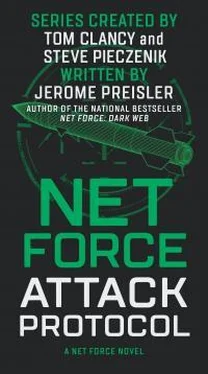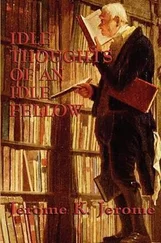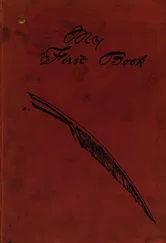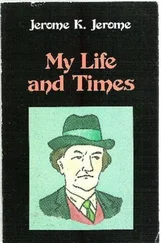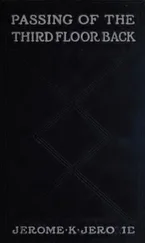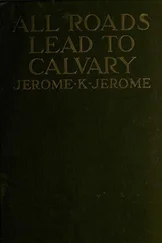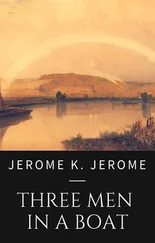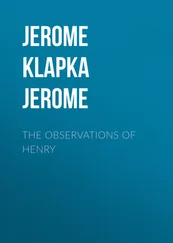Howard exhaled slowly, his breathing ragged. Even talking hurt like hell. But he’d already spelled out his plan to Fernandez and Wass. At Armor School in Georgia they had called it dismounting from a stationary coil. In the cowboy movies, where they weren’t so formal, it was just circling the wagons.
“Those walking transistor radios aren’t as dumb as they look,” he said. “They’re staying far enough off so they can duck our rockets.”
Fernandez nodded. “Spree must’ve realized it was snookered. I’m sure it sent out a red alert about the FOG to its robot brothers.”
“You think they know we came here for the people in the bunker?”
Fernandez nodded. “They’re able to identify and react to rescue situations,” he said. “That means they can recognize and contextualize what we’re doing here.”
“So that’s a yes ?”
“Yeah.”
“Then they’re waiting for a chance to close in.”
The sergeant nodded. “Probably till they think we’re vulnerable.”
Howard gave him a hard look and hefted his blooper up against his chest.
“We’ll see how that works out,” he said.
From the outside, it appeared to be an ordinary shed standing on the paved surface of the parking lot eighty yards from Janus’s western boundary line, and roughly equidistant from the rubble and embers that only hours ago had been the FOB’s main troop barracks. It was fairly large—spacious enough to hold a backhoe loader, snowblowers, and other equipment, along with fifteen or twenty people—with a concrete base, sheet-metal sides, and a pitched asphalt roof. Its west-facing door looked on to a wide dirt buffer between the fence and the lot, and beyond that, miles of thick black pine forest.
The Pumas quickly crossed the parking lot to the shed and shifted into a stationary-coil formation around it . Each backed up on it from a different side, leaving a dozen feet of clearance. The lead auton—Percy One—halted with its front end pointed at the north field. Percy Two faced east toward the rear of the barracks, and Percy Three nosed south. Inside the C&C vehicle, Fernandez braked with his headlights shining steadily on the western fence and his rear hatch toward the door of the shed.
Howard was already out of his straps. He leaned forward and tapped Wasserman’s arm.
“You all set?” he said.
“Be right with you, sir.” Wasserman tapped his earpiece. “Checking to see that the evacs are standing ready.”
“Julio?”
“I’m good.”
Howard unslung his blooper, waited a second as Wasserman pulled off his headset.
“Open the fucking hatch,” he said.
Wasserman hopped down out of the vehicle, Howard maneuvering painfully through the hatch after him. They were a few steps from the shed’s door.
The drones attacked almost the instant they set foot in the snow, whistling and humming as they bore in from the red-streaked sky.
Wasserman flinched a little. It had been easier to trust the FOG’s lights and pulses inside the Puma. Now he felt naked and exposed. But its shield held up. The deflected fliers skipped away like stones across the surface of a lake, taking haphazard little hops and bounces in midair, popping off with bright flashes of light.
Howard pointed his chin at the shed. “Let’s move!” he hollered.
They hurried over to it. Wasserman got out his key card, swiped it into the reader, and the door unlocked with the slightest click. As they pushed in, a motion sensor automatically turned on the interior light.
The shed was empty and clean, with a single small window looking to the east. There were two air-ventilation gratings in the concrete floor. Between them in the middle of the floor was a blast hatch, a three-foot-square, steel-in-steel frame. As they moved up to it, a second motion sensor opened the door on pneumatic lifts.
Howard looked down into the passage. A dozen steps descended to a small cement vestibule. The treads were textured for secure footing. In the wall facing the stairs was a gray steel door with steel compression handles and a steel frame.
Howard signaled Wasserman with a glance and led the way.
He’d only taken three steps down when the door at the bottom swung open. A man stood in the light splashing from behind it. Half of his face had been severely burned. It looked like melted wax. A bandage covering his eye on that side was soaked with fluid.
“Jeffries,” Howard said. “We’re here. We got you all.”
The captain peered up at the stairs with his one good eye.
“Thank God,” he said.
In the C&C, Fernandez was mentally reviewing weapons specs, making basic arithmetic calculations, and drawing some uneasy hypotheses.
The panel in front of him showed Walt at the edge of the lot some three hundred yards away, a clear and distinct icon on his Argos tracker, a small, squat shape to his cameras, a speck to his unaided eye. It wasn’t moving from there. It was just watching—
“No, check that,” he said aloud to himself. “Not just ...”
The ’hog would be communicating with its robot brothers. Nash and Earl. Sharing data. Learning. All three, learning and planning together.
He’d been trying to think along with them— like them—and could pretty well suppose what their plan might be. It was in the weapons. And the math.
He sat there at his displays and controls, monitoring the whereabouts of the drones, and keeping an eye on the shed behind his open hatch.
Three hundred yards wasn’t far, he thought. Not when he considered that his Striker’s accurate targeting range was over two thousand yards. Many times that distance. But for the hedgehog, it was far enough to dodge a rocket fired from its barrel. Spree might have been fooled by his soft-kill countermeasures, but the rest of the ’hogs wouldn’t be. They were like crows. When one was killed, the rest of the flock would gather to look at what happened, analyze the reason for its death, and use their understanding to avoid future threats to their own lives. Social learning.
In a sense, Spree’s destruction had been good for the other robots. It was definitely instructive. They would have learned from it. Would know about the FOG system and modify their tactics. Which explained why Nash had eased off. And why Earl was also hanging back to the east.
They didn’t want to get too close to the circle of Pumas. They didn’t have to. Because they wouldn’t need to use their anti-armor rockets to achieve their objective. Not if it was to wipe out the humans escaping the bunker.
They had their M2 .50-cals for that. The Ma Deuces. The same old-fashioned, low-tech, belt-fed heavy machine gun that had torn into Doc Hughes and her Midnight Runners. The same kind of gun Audie Murphy used to hold off half a dozen German tanks and a couple of hundred infantrymen in World War II. Put a human being behind one, and its effective range was six thousand feet. Well over a mile. Plenty long enough to do the job. Mount one on a robotic gunner like a hedgehog, with its sophisticated targeting system, and its effective range extended to about four miles .
It was a ridiculous weapon, when you thought about it. Each bullet was five and a half inches long, the size of a dart or a pencil, and ten times heavier than the 5.56 rounds fired by most semiautomatic rifles. A single round was usually enough to kill a person. Even a person standing a mile away. The entrance wound’s cavitation created a wound larger than a human head. But the force of impact alone would be enough to do the job. Would tear apart tissue on a cellular level and send shock waves into the brain. From a mile off. At a closer range—say, Walt’s distance from the men and women who would be coming out of the emergency shelter—it would literally make a human body explode.
Читать дальше
